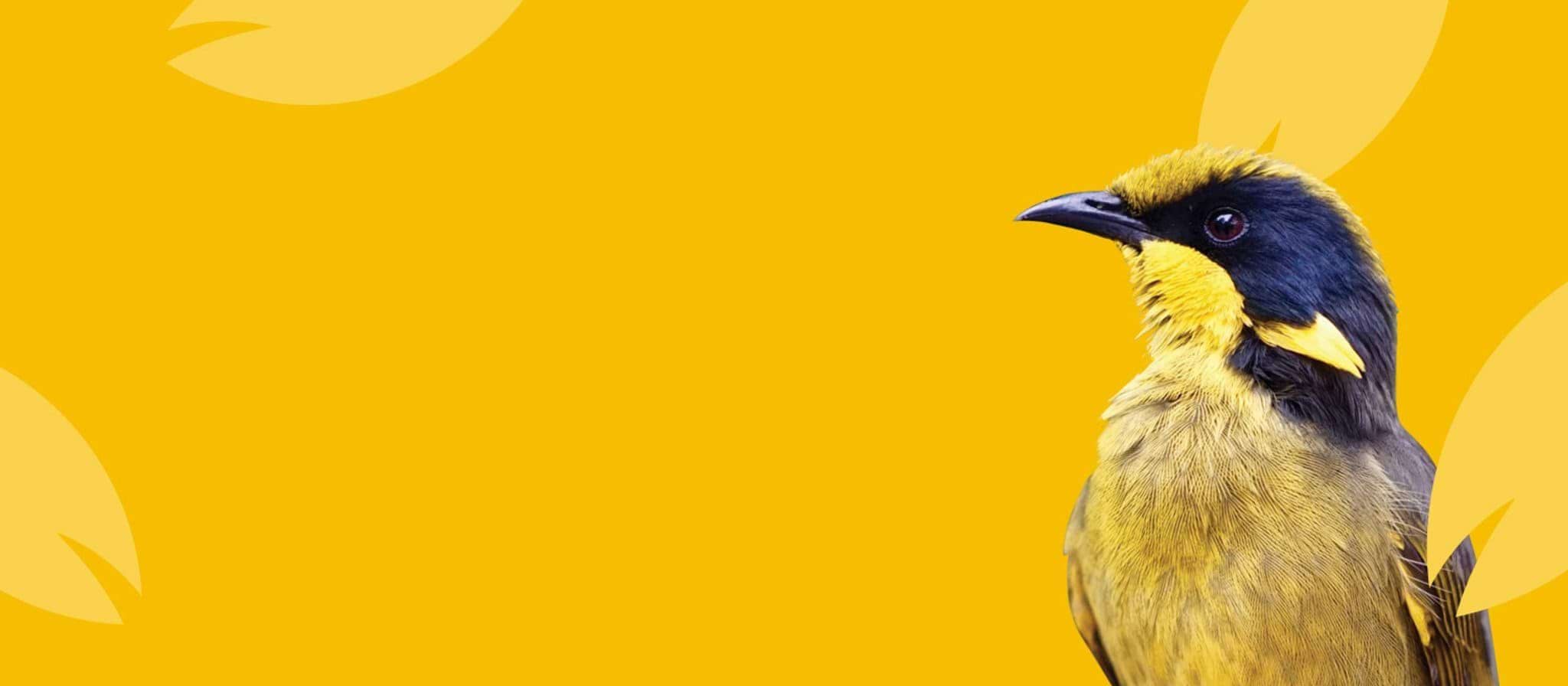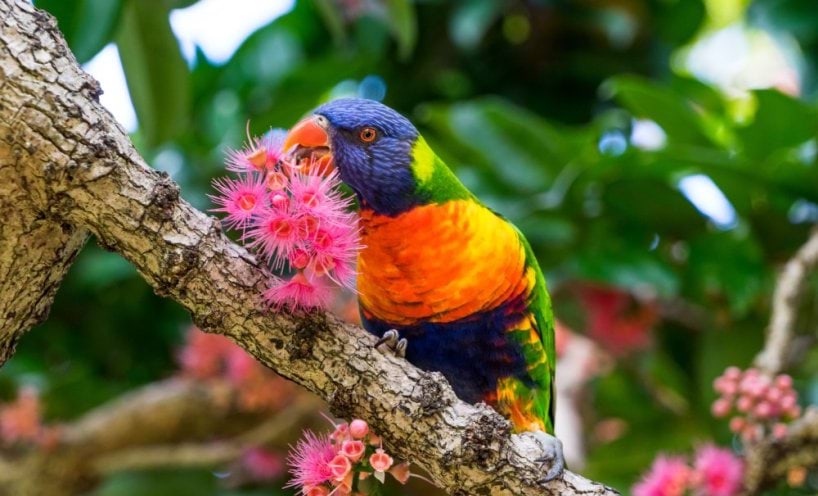With most of us spending a lot of time at home right now, it’s a great opportunity to get a few DIY projects done. One DIY job, which will also be good for your wellbeing and the environment, is wildlife gardening.
Wildlife gardens are designed to attract native animals like birds, frogs, lizards, bees, butterflies and other creatures. By creating a wildlife garden, you’re potentially providing a home, food, protection, or just a nice place to visit for our beautiful wildlife.
Check out our DIY tips to create a wildlife garden at your place.
DIY tip 1
Find out who is already visiting your garden. Spend some time outdoors to see what, if any, wildlife is currently visiting your garden. That could be birds, bees, butterflies, lizards, frogs or even possums. Also, research what plants are native to your area through your local council, nursery or community environmental groups. You can do a survey of birds that visit your garden. That information will be of interest not only to you as you plan your wildlife garden, but to organisations like Birdlife Australia as well, which regularly surveys what birds are turning up where.
DIY tip 2
Find out what plants local wildlife love. Once you know what creatures are native to your neighbourhood, find out what plants they like to eat and nest in by searching online or again, contacting your council, local nursery or environmental group.
How you structure your garden is also important. Open lawn and a few trees can work for birds like parrots. Many birds will be attracted to plants at different heights – like trees, grasses and shrubs (and leaf litter, which attracts insects and some skinks as well as being good for the garden).
DIY tip 3
Plan your wildlife garden. Think about what you want from the garden and how to make that happen. As well as attracting wildlife you may want to get the kids outdoors to help you or use your garden to grow veggies, herbs and fruit. Ask yourself these questions and start a to-do list:
- What needs to be done to the current garden?
- What will you plant?
- How much maintenance are you willing to do?
- Are there a lot of weeds?
For bird lovers, check out Dr. Holly Parsons from Birdlife Australia and her advice on creating a garden native birds will flock to. Some local councils, like Knox in Melbourne’s east, run a Gardens for Wildlife program for locals. Even if you don’t live in Knox, you can still use some of their wildlife gardening resources.
DIY tip 4
What should I plant? While plants native to your local area are a great way to attract wildlife, sometimes exotic plants or even weeds can be important features.
Don’t rip out lots of plants all at once and replace them with seedlings which could take years to grow. Birds and other creatures may need to find somewhere else to hang out if that weedy patch they love suddenly disappears. Replace existing plants or patches of weeds gradually
DIY tip 5
Keep your pets away from wildlife. No one wants to go to lots of effort to attract native birds and animals to their garden if your pets are going to hunt or harass them. If you have a dog, set aside a section of your garden that remains dog-free at all times. Always keep the dog under your control, particularly when out and about in nature. This includes making sure your dog responds to your commands when it’s off lead.
If you have a cat, make it an indoors only pet or build a cat run for it in your backyard. A cat run is an enclosed space where the cat can enjoy the outdoors without having free rein to wander wherever it likes. They can be tunnel-like or just a large enclosure in your backyard made with cat netting or similar that has things to climb and high places to sit on for your much-loved moggy.
DIY tip 6
Attract skinks and lizards to your garden. Our lizard expert Nick Clemann shared some interesting info with the ABC’s Gardening Australia program on how to get skinks and other lizards basking in your backyard.
DIY tip 7
Having a garden with leaf litter, grasses, shrubs, rocks and logs to bask on will provide habitat for different types of skinks and lizards. Plant grasses or other shrubs next to rocks so a lizard catching some rays can quickly hide from any nearby predators. Also provide water – leave out a filled water bowl if there’s no naturally occurring water source in your yard. You can even add a lizard box as habitat when turning your yard into a lizard lounge. 7. Make your yard frog-friendly. A pond, a frog bog or a frog hotel could draw frogs to your backyard – assuming frogs live near you. While creating a pond in your backyard that has just the right amount of algae can be tricky, it’s easy to build a frog hotel. These hotels are for tree frogs and can take a while to attract guests.
You can find out what frogs live in your region with FrogID. This fantastic app features the croaks, barks and whistles of Australia’s amazing frogs. It will help you identify which ones are your neighbours.
DIY tip 8
Attracting pollinators is good for fruit and veggie gardens. Birds, bees, butterflies and other critters (even blow flies) are responsible for pollinating our gardens. They’re particularly important for fruit and veggie gardens.
You can attract these important animals to your garden, courtyard or balcony by planting flowers. This Gardening Australia video tells you what flowers to plant to get the best yield from the food you’re growing at home.
DIY tip 9
Save time maintaining your wildlife garden. Generally speaking, a wildlife garden is going to take less maintenance, leaving you more time to enjoy the fruits of your labour.
It’s a lot easier to maintain garden beds than lots of lawn, for example. Pruning is very quick (unless you want to create a native hedgerow) and only needed occasionally. Heavily mulching the beds reduces the need to weed and also provides a home for insects. Perfect for the time poor (or lazy gardeners!)
DIY tip 10
More wildlife DIY projects for home. Whether it’s birds, bees, butterflies or even bats you want to invite into your garden, it may be just one DIY project away. Backyard Buddies has plenty of worthwhile info on how to go about it.
Happy wildlife gardening!
Updated

